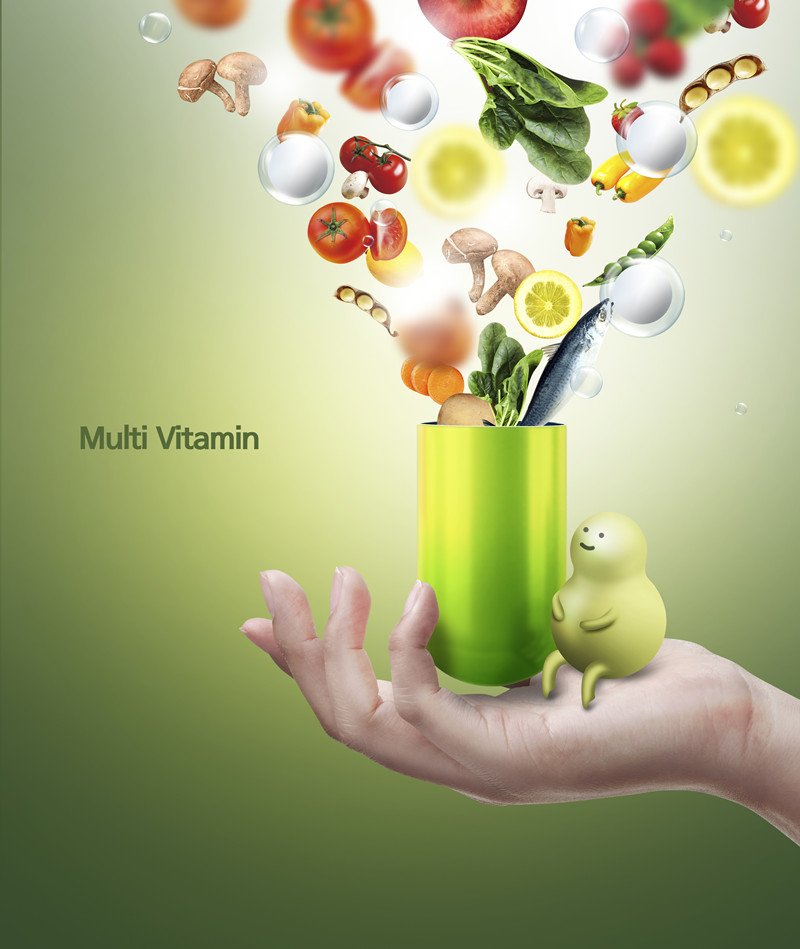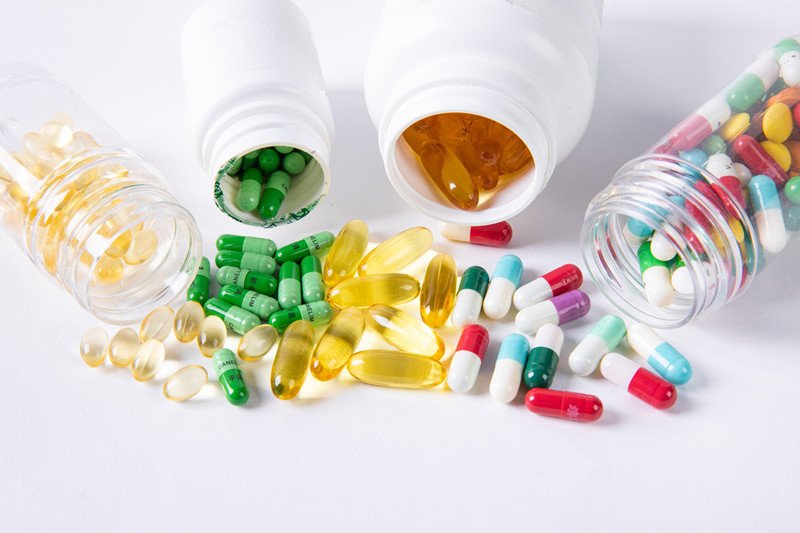China Medical Insurance Chamber of Commerce released the “Dietary Nutrition Supplement Industry Development Report (2019)”. The report comprehensively sorts out and analyzes the market situation and international trade situation of China’s dietary supplement industry, and predicts the industry trend from the perspective of development.
The following summarizes the relevant situation of the domestic dietary supplement market in 2018 and the export data of popular categories in the report as follows.
1 2018 China’s dietary supplements market size
With the popularization of the national concept of prevention and treatment of disease, the increase of the elderly population and the importance of people’s health, more and more consumers have begun to use nutritious and healthy foods consciously. The consumption capacity of healthy food is on a steady rise.
According to statistics, the annual growth rate of China’s dietary supplement industry is 10%-15%. Among them, the market size in 2018 exceeded 460 billion yuan, plus special foods such as functional foods (QS/SC) and foods for special medical purposes. In 2018, the total market size exceeded 750 billion yuan.

2 Current status of China’s dietary supplement industry
2.1 The number of product approvals during the policy adjustment period has dropped significantly
As of the end of 2018, there were 17,470 health foods approved as “blue hat” registrations. Among them, 16,690 were domestically produced, 780 were imported, 44 were imported and registered, and 1,398 were domestically registered. Most of the products approved in 2018 were renewed or registered products, and only 3 newly approved registered products. From 1996 to 2018, the number of products approved by the health food regulatory authority can be seen that the number of approved products has changed significantly. In 2004 and 2014, the number of approvals was relatively large, but during the policy adjustment period, the number of approvals decreased significantly.
The top five functions of approved health foods are: strengthening immunity, relieving physical fatigue, assisting in lowering blood lipids, anti-oxidation, and laxative. Immunity enhancement is the highest proportion of approved health food functions, accounting for 31.9%. The second is to relieve physical fatigue and assist in lowering blood lipids. There are relatively few products approved for other functions.
2.2 The health food filing system has attracted much attention
Since the promulgation and implementation of the new “Health Food Registration and Filing Management Measures” on July 1, 2016, the health food filing system has attracted attention from the industry. Subject to factors such as policy adjustments and the lag in the introduction of related supporting policies, it was not until December 2017 that the first imported product was approved. The number of subsequent filings is in a stage of rapid growth. Among them, 243 products were filed in 2017, and the number of products filed in 2018 reached 1,144, a year-on-year increase of 371%.
3 2018 China’s dietary supplement export situation
At present, the Asian dietary supplement market has surpassed Europe, becoming the world’s second-largest dietary supplement consumer market. China is the largest consumer market for dietary supplements in Asia. In 2018, the import and export volume of China’s dietary supplements reached US$4.68 billion, a year-on-year increase of 31.5%, a record high. Among them, the export value was US$1.67 billion, a year-on-year increase of 21.8% over 2017. The main export markets are the United States, Japan, Indonesia, and other countries. The provinces and cities with the largest export volume are Jiangsu, Guangdong, Shanghai, Shandong, and Zhejiang. Jiangsu Ailand, Xianle Health, and Shandong Yuwang are among the top three exporters of the company.
Raw materials are the guarantee and basis for the quality of dietary nutritional supplements. The raw materials of dietary supplements mainly include vitamins, minerals, amino acids, extracts (plants, animals), probiotics, etc. Among them, China has strong advantages in the production and export of dietary supplement raw materials such as vitamins, amino acids, and plant extracts.
In the export of raw materials, the performance of extracts in 2018 showed “explosive” growth, and the export value increased from US$2.01 billion in 2017 to US$2.368 billion. The year-on-year increase soared from 4.33% to 17.79%. In terms of export varieties, the top ten hot varieties are stevia leaf extract, eucalyptus oil, menthol, licorice extract, marigold extract, bilberry extract, hesperidin, ginkgo leaf extract, rutin extract Things. Their total export value exceeds 1 billion U.S. dollars, which is close to 50% of extract exports. The export value of vitamin raw materials reached US$3.44 billion, a year-on-year increase of 8.85%. The export of chondroitin sulfate was US$204 million, and the export of amino acid raw materials was US$2.57 billion, a year-on-year growth rate of 10.69%.
4 The export situation of specific raw material categories
4.1 Vitamins
Judging from the export value of various types of vitamin raw materials in 2018, the export value of vitamin E, vitamin C, and D-pantothenic acid is relatively large. In terms of growth rate, the export value of vitamin A increased by 70.44% year on year, followed by vitamin E with a growth rate of 41.4%. The growth rate of granulated or coated vitamin C was 39.97%. The export value of vitamin D and vitamin C esters and other products dropped significantly, 25.15% and 21.42% respectively.

4.2 Plant extracts
Customs statistics show that the import and export volume of China’s plant extracts in 2018 was US$3.094 billion, an increase of 18.26% year on year. Among them, exports amounted to US$2.368 billion, a year-on-year increase of 17.79%. Imports amounted to US$726 million, a year-on-year increase of 19.8%. The surplus reached US$1.641 billion, a year-on-year increase of 16.92%. From 2016 to 2018, the import and export volume of plant extracts showed a steady increase, especially the growth rate of extracts reached 18.6% in 2018.
In 2018, China exported extract products to 147 countries and regions. Asia, Europe, and North America are the most important export markets, with exports accounting for nearly 90%. Asia is the largest export market for extracts. In 2018, China’s exports to Asia reached US$1.083 billion, accounting for 45.74% of total exports, a year-on-year increase of 21.51%. Secondly, the export value to the North American market ranked second, with a total export value of US$551 million, a year-on-year increase of 15.11%. The export value to the European market was US$508 million, an increase of 14.32% year on year. On the whole, China’s exports to the six continents markets showed a general upward trend in 2018.
Among the export varieties, the top ten are stevia leaf extract, eucalyptus oil, menthol, licorice extract, marigold extract, bilberry extract, hesperidin, ginkgo leaf extract, and rutin extract. Their total export value exceeds 1 billion U.S. dollars, which is close to 50% of extract exports. Among them, the export value of stevia leaf extract, eucalyptus oil, and menthol all exceeded 200 million US dollars. In 2018, extracts of essential oils were strong. The export prices of eucalyptus oil and menthol have increased rapidly, directly driving up the export value, and both varieties have entered the total range of 200 million US dollars. The main varieties of sweetener extracts have also maintained steady growth, and the export scale of stevia extracts and licorice extracts has been further expanded.
4.3 Amino acids
In 2018, the export value of amino acid raw materials was US$2.56 billion, a year-on-year increase of 10.7%. According to customs data, the export value of China’s amino acid raw materials has been increasing year by year from 2011 to 2018, except in 2015. The growth rate in 2016 was large, and the growth rate has decreased in the past two years.
In 2018, China’s amino acid raw materials were mainly exported to Asia and Europe. From a country perspective, the top 10 exporting countries are the United States, the Netherlands, Thailand, Germany, Vietnam, India, Japan, South Korea, Indonesia, and Belgium. Among them, the export value of Germany, India, South Korea, and Belgium increased by 47.6%, 40.1%, 40.6%, and 93.1% respectively.
4.4 Coenzyme Q10
So far, China is the world’s most important coenzyme Q10 supplier, and China accounts for five of the world’s six largest coenzyme Q10 suppliers. In 2018, the export value of China’s Coenzyme Q10 was US$15.03 million, a slight decrease compared to 2017.
The export market of Coenzyme Q10 raw materials is mainly North America. In 2018, the export value to this market was 110 million U.S. dollars, accounting for 73%. Exports to Europe amounted to 16.98 million U.S. dollars. Although the African market accounts for a small proportion of exports, the growth rate is 121%. From the perspective of exporting countries, the United States is the absolute main market, with an export value of 100 million US dollars, accounting for 68% of the share. This is followed by Germany, Canada, and Australia.
4.5 Fish oil
The total export of fish oil raw materials in 2018 was US$68.61 million, a year-on-year increase of 0.92%. From the perspective of export markets, Europe, North America, and Asia are the main export markets for my country’s fish oil raw materials. The European market has great potential for Chinese fish oil demand, which increased by 34% in 2018 compared to 2017. In terms of specific countries, the main countries that China’s fish oil raw materials export are Chile, Canada, the United States, Spain, and India. Although Chile’s export value is currently the number one at US$1.55 million, it has fallen by 18% year on year. From the perspective of the growth in export value, Germany’s export value has increased by 310% year on year, and the exports of Greece, the Netherlands, Belgium, and other countries have also increased significantly year on year.

5 China’s dietary supplements market and hot products
With the changes in the demographic structure and consumer awareness, current probiotic products, bone, and joint health, sports nutrition and beauty related products, and eye health products are the best-selling products in the market. Single-product fish oil capsules, protein powders, vitamin products, dietary fiber, and other products are best-selling products. From the perspective of retail pharmacies, the sales of vitamin products, laxatives, bone density increase, and immunity enhancement products are better.
Mi Nei.com ranked China’s urban retail pharmacies’ terminal health food brands in 2017, among which protein powder, vitamin products, and bone and joint health products belong to the hot-selling categories. From the perspective of emerging channel network channels, the post-80s and post-90s are the main consumers, and the post-95s consumption growth rate is leading. Their overseas shopping habits have gradually developed. Collagen, dietary fiber, grape seeds, liver protection, bone health products, lutein, whey protein, and other products are very popular.
According to Tmall International’s “2018 National Health Cross-border Consumption Trend Report”, the most popular health products welcomed by consumers from 2017.07 to 2018.08 are dietary fiber, enzymes, calcium, vitamin C, whey protein, collagen, grape seed extract, Multi-vitamins, and minerals, glucosamine, fish oil. Among them, dietary fiber, collagen, enzymes, probiotics, and vitamin C have the fastest increase in heat. From a country perspective, imported health products from Australia, the United States, and Japan are the most popular.

